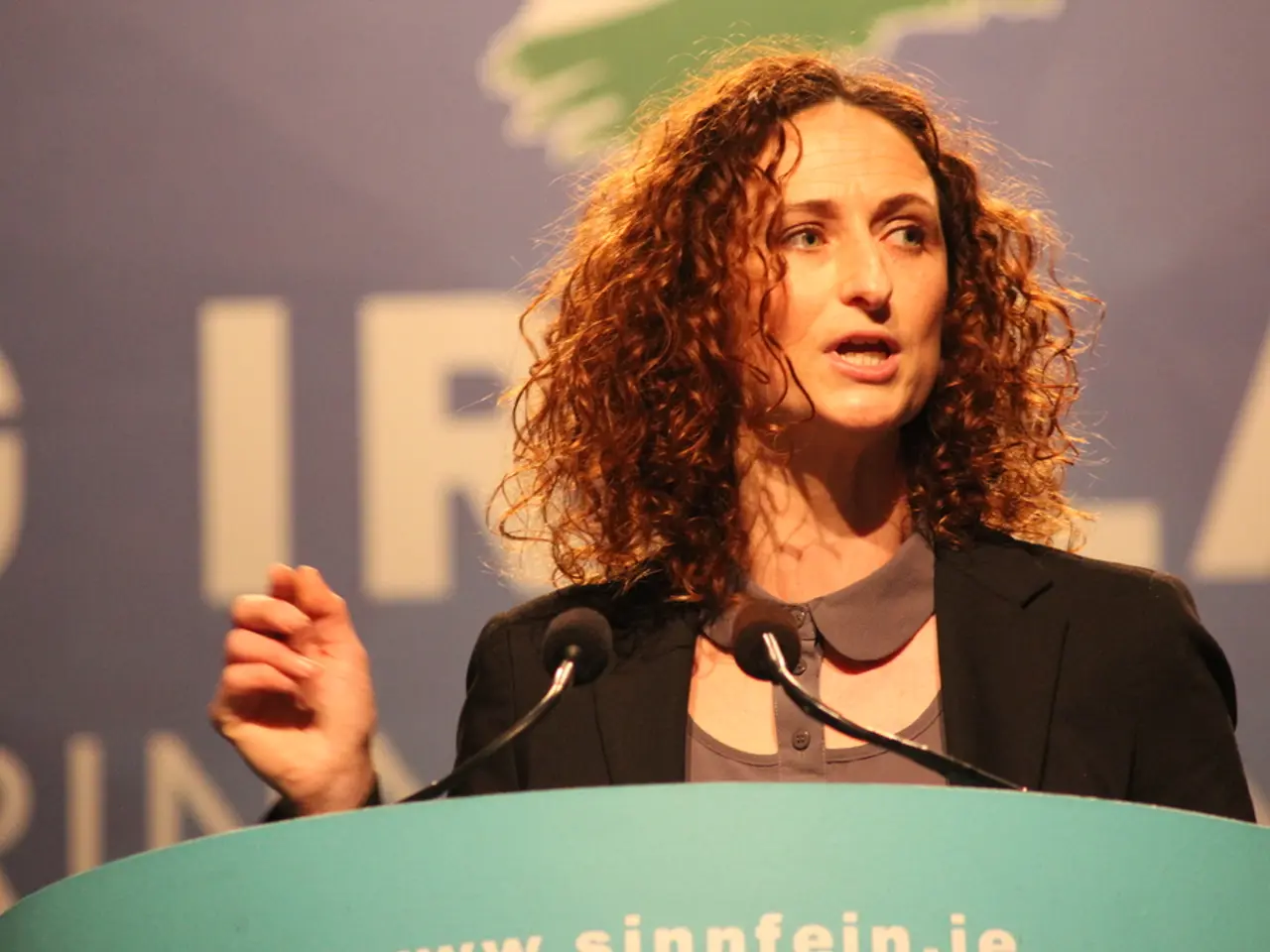Under scrutiny as the Gaza discourse shifts in favor of Palestine, The New York Times faces intense scrutiny
In the ongoing conflict in Gaza, the focus on humanitarian issues has become increasingly prominent in international media outlets. The New York Times, a leading global newspaper, has been at the forefront of this shift, updating their story about malnourished children in Gaza to provide more context.
The revised story centres around Mohammed Zakaria al-Mutawaq, a child who had been previously reported as a victim of malnutrition. However, new information from the hospital treating him reveals that he also suffers from cerebral palsy, a condition that significantly impacts his health status. This update adds much-needed context to the original story, which had primarily emphasised starvation without clarifying the child's underlying medical issues.
The correction has sparked a debate, with pro-Israel groups and media outlets using it as evidence of initial misinformation or bias in the original report. They argue that the omission of key medical facts complicates the narrative of simple starvation. This update has been cited in Israeli media, such as The Jerusalem Post, as an example of the need for more rigorous reporting on humanitarian conditions in Gaza.
Meanwhile, other media outlets, including NBC News, CNN, and The New York Times, are now focusing on the widespread hunger in Gaza. A CNN producer described the situation as "absolutely catastrophic," with no access to food, clean water, or medical care. Centre-left writer Matthew Yglesias has gone so far as to suggest that Israel's new tactics in Gaza are provoking mass famine.
The New York Times' top editors decided against using an image of a malnourished child due to concerns it might call into question the paper's reporting. However, they did publish a photo of another malnourished child, Mohammed Zakaria al-Mutawaq.
The Israeli media presents a different picture of Gaza, far from the images of starvation in the international press. Some staff at The Times expressed frustration with the paper's statement about the photo, saying it undermined their reporting on starvation in Gaza.
Despite the controversy, the Times' columnist Ross Douthat wrote of "how Israel's war became unjust," reflecting a clear tonal shift in media coverage and political reaction. A recent Gallup poll indicates that only 32% of the American public back the Israeli campaign in Gaza, suggesting a growing public disapproval.
Investors are being urged to have more "moral imagination," as the crisis in Gaza continues to unfold. The situation underscores the need for balanced, accurate, and sensitive reporting on complex and sensitive issues. As the world watches, the media's role in shaping public opinion and advocating for human rights becomes increasingly important.
- The child, Mohammed Zakaria al-Mutawaq, traditionally associated with malnutrition, is also battling cerebral palsy in the light of new hospital information.
- The revised story underlines what was previously ignored, the medical-conditions, notably cerebral palsy, of the malnourished child.
- The omission of key medical facts had been a subject of debate, with critics accusing the media of negligence or bias in reporting.
- The Israeli media paints a starkly contrasting picture of Gaza, devoid of images of starvation prevalent in international media.
- The Israeli media's perspective on Gaza portrays a different reality compared to the images of hunger and malnutrition presented in international press.
- Pro-Israel groups have used the updated story as evidence of flawed or biased initial reports about the situation in Gaza.
- The New York Times had initially decided not to use an image of a malnourished child due to potential questions about the paper's reporting.
- In response to the controversy, The Times published a photo of the malnourished child, Mohammed Zakaria al-Mutawaq, nevertheless.
- Centre-left writer Matthew Yglesias has gone as far as to suggest that Israel's new tactics in Gaza are instigating mass hunger.
- The Times' columnist, Ross Douthat, wrote about the "unjust" nature of Israel's war, demonstrating a shift in media coverage.
- The 32% approval rating from the American public for the Israeli campaign in Gaza, according to a Gallup poll, indicates growing disapproval.
- In the face of the ongoing crisis in Gaza, investors are being advised to cultivate "moral imagination," calling for balanced, accurate, and sensitive reporting.
- As the world bears witness, the media's influence on shaping public opinion and advocating for human rights has become increasingly significant.
- The need for more rigorous reporting on humanitarian conditions in Gaza has been highlighted, citing the update about Mohammed Zakaria al-Mutawaq as an example.
- The widespread hunger in Gaza, now the central focus, has been described as "catastrophic" by CNN producers.
- As media coverage shifts towards the health-and-wellness concerns in Gaza, the public's awareness of medical-conditions related to the crisis is growing.
- The surge in awareness is provoking calls for action, particularly in the field of data-and-cloud-computing, to support humanitarian efforts in Gaza.
- The crisis in Gaza has brought the issue of food-and-drink security to the forefront, with dire consequences for the people of Gaza becoming apparent.
- The science community has expressed concern about the potential long-term effects of the environmental-degradation caused by the conflict in Gaza.
- The situation in Gaza also demonstrates a pressing need for wealth-management initiatives to help alleviate the sufferings of the affected population.
- In the midst of the unfolding crisis, lifestyle and fashion-and-beauty companies are being encouraged to use their platforms for advocacy, encouraging consumers to support aid efforts in Gaza.
- The evolution of the crisis in Gaza highlights the interconnectedness of various domains, spanning science, finance, environmental-science, technology, relationships, and pop-culture, all converging towards a common goal: seeking a solution for the suffering in Gaza.




